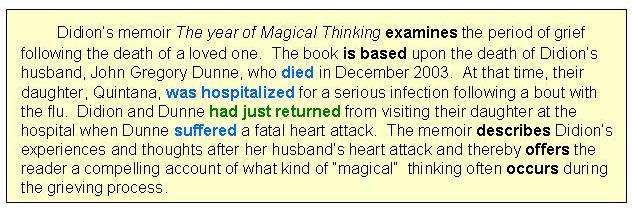
There are three main verb forms for showing time or tense:
Simple Tense
does not use
auxiliary verbs
refers to specific time period during which
something
happens
OR
something happened and is over
OR
something will happen
Simple present (action goes on now): I sit
Simple past: (action happened and is over): I sat
Simple future (action will happen): I will sit
Perfect Tense
Present perfect (action happened and may still be going on): I have sat
Past perfect (action happened before something happened in the past): I had sat
Future perfect (action will be considered in the future, by which time it will have already happened): I will have sat
Progressive Tense
Present progressive (action is in progress right now): I am sitting
Past: progressive (action was in progress in the past): I was sitting
Future progressive (action will be in progress in the future): I will be sitting
Each of the above tenses denotes a specific time for an action or event to take place. Writers should be careful to use the exact tense needed to describe, narrate, or explain.
In general . . .
Do not switch from one tense to
another unless the timing of an action demands that you do.
Keep verb tense consistent in sentences, paragraphs, and essays.
Verb tense consistency on the sentence level
Keep tenses consistent within sentences.
Do not change tenses when there is
no time change for the action.
INCORRECT:

CORRECT:
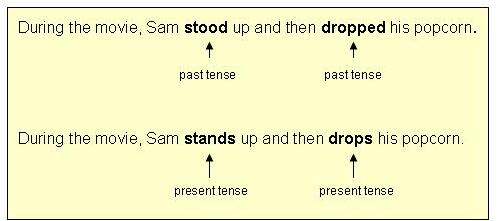
Since there is no indication that the actions happened apart from one another., there is no reason to shift the tense of the second verb.
Note another example.
INCORRECT:

CORRECT:

The above sentence means that Mary walks into a room at times. The action is habitual present. The second action happens when the first one does. Therefore, the second verb should be present as well.
Change tense only when there is a need to do
so.
Usually, the timing of actions within a sentence will dictate when the
tense must change.
CORRECT:
The first action will take place in the future; therefore, the second one will as well.
CORRECT:

The second action took place in the past; the first action occurred before the past action. Therefore, the first action requires the past perfect tense (had + verb).
Verb tense consistency on the paragraph level
Generally, establish a primary tense and keep tenses consistent from sentence to sentence.
Do not shift tenses between sentences unless there is a time change that must be shown.
PRESENT TENSE PARAGRAPH

All actions in the
above paragraph happen in the present except for the future possibility dependent upon a
present action taking place: " If a
cat sees the bird, the cat will kill it."
PAST TENSE PARAGRAPH

All of the
actions in the above paragraph happen in the past except for the possibility
dependent upon
one action taking place: "If a cat saw
the bird, the cat would kill it."
Verb tense consistency on the essay level
1. Use present tense when writing essays about
YOUR OWN IDEAS
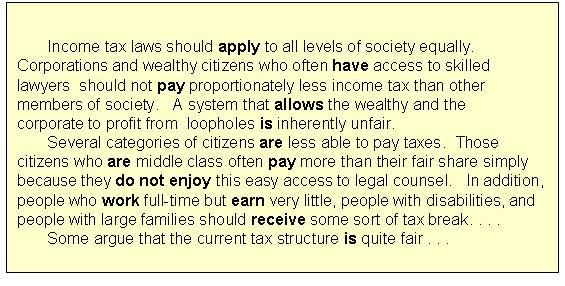
FACTUAL TOPIC
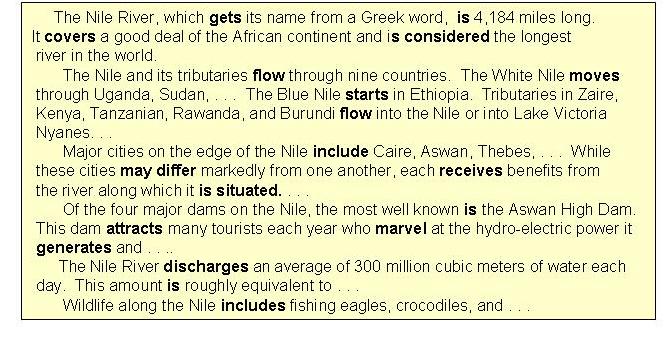
ACTION IN A SPECIFIC MOVIE OR BOOK

NOTE: When quoting from a work, maintain the present tense in your own writing, while keeping the original tense of the quoted material.
EXAMPLE (quoted material is shown in blue)
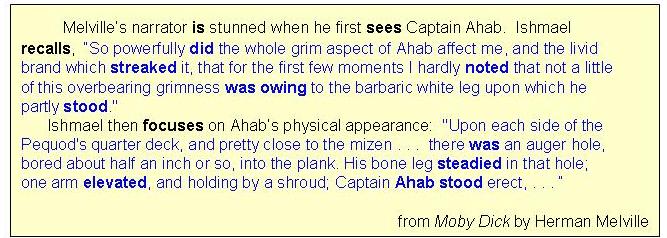
2. Use past tense when writing about
EXAMPLE - PAST EVENT

Note the justified use of present tense in the last sentence (shown in blue).
EXAMPLE - SCIENTIFIC STUDY

3. Use future tense when writing about
EXAMPLE - FUTURE EVENT

Remember . . .
Change tense ONLY when something in the content of your essay demands that you do so for clarity.
Note how the following example incorporates tense change as needed to clarify several time periods.
